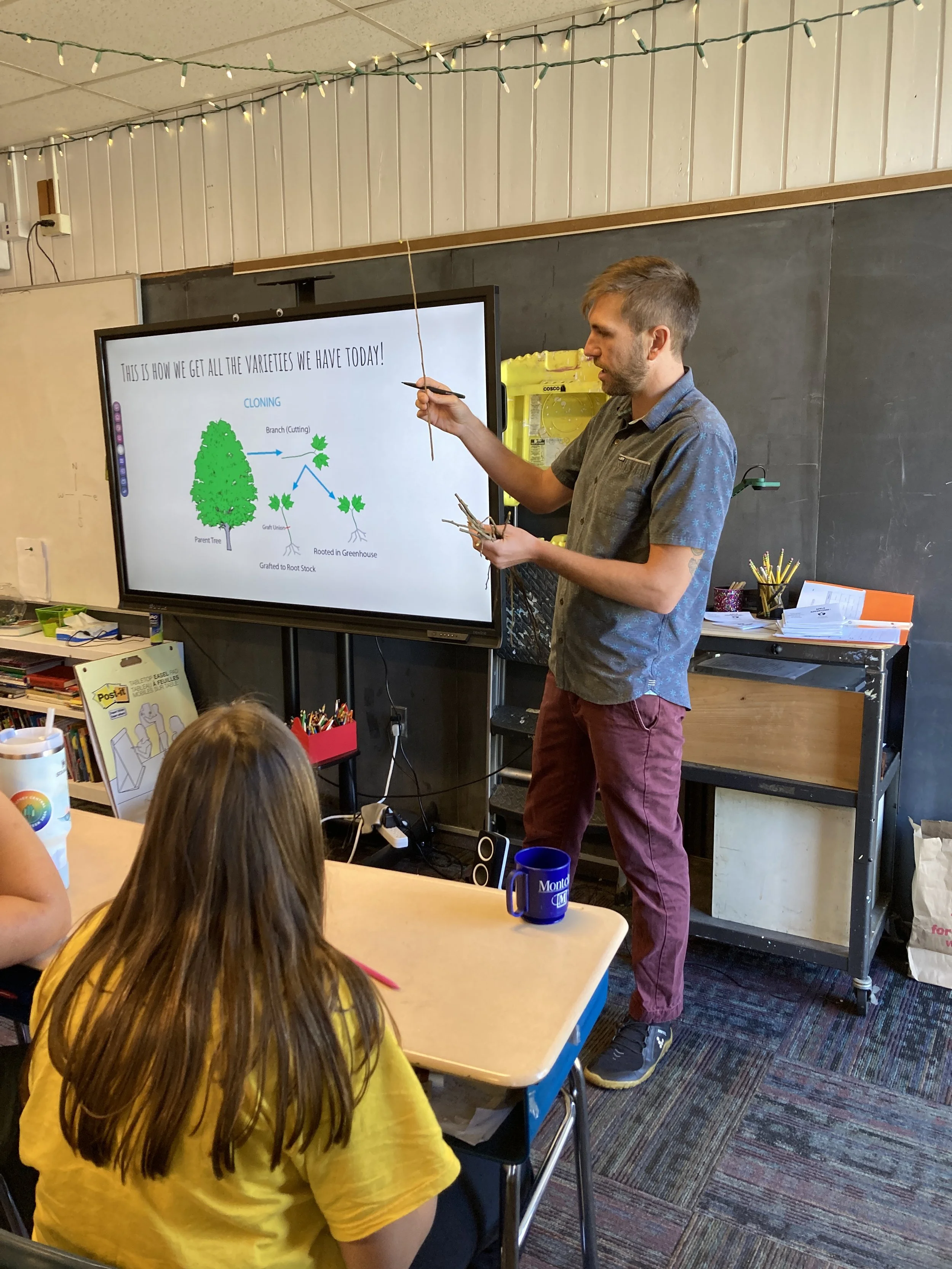Ms. St. George’s 5th-grade students shuffled in from recess, their eyes lighting up at the sight of a table full of apples in the corner. “Are those for us?” one student asked, while their teacher directed them to take a seat and prepare for the lesson. Although the students at Putney Central School were familiar with taste tests and Farm to School programming, this pilot lesson marked our first trial of a model that provided a more in-depth background on the seasonal foods celebrated through the Harvest of the Month program.
The students were eager to learn (and to taste) all about heirloom apples as we began our lesson. After a brief true-or-false warm-up, students were introduced to the concept of grafting—the time-tested method responsible for preserving thousands of apple varieties throughout history. This process allowed families and orchardists to save specific apple genetics through selective cloning. As the students studied small twig shoots cut from apple trees (referred to as scions), they were brimming with questions and observations.
They were amazed by the grafting process, and speculative whispers filled the room when they learned that, with some practice, they could graft their very own apple trees. Their curiosity was evident as they asked thoughtful questions like, “Crayons are made of wax, could I use that?”
Next, we explored the seasonal cycles of an apple tree, giving the students a chance to stretch their legs as they worked together to organize photos depicting each stage of growth. They collaborated wonderfully in groups and were even able to reflect on the importance of each stage in the development of the apples.
Finally, it was time for the tasting! Each student was given an Apple Passport and instructed to be respectful of the food and of each other’s preferences as they sampled seven varieties of apples. From the tiny, tart Hewes Virginia Crab to the massive Wolf River apple, students chewed and contemplated like true apple connoisseurs.
In reflection, each student wrote down and shared their thoughts on the flavors, textures, and appearances of the apples they sampled. One student, when asked about the Ananas Reinette, observed that it looked like an unripe lime, adding, “It was a little sweet and a little sour.” Many of the students shared their unique insights, demonstrating their inquisitiveness around food.
Overall, the students did a fantastic job, and the lesson was a great starting point for future sessions. Our hope is to continue offering Harvest lessons each month on a rotational basis to our member schools. This will not only provide us with opportunities to test out different models of Harvest of the Month lessons in real-time with various age groups, but it will also offer students an exciting new way to engage with seasonal foods and learn more about local agriculture.
- Devan Monette








